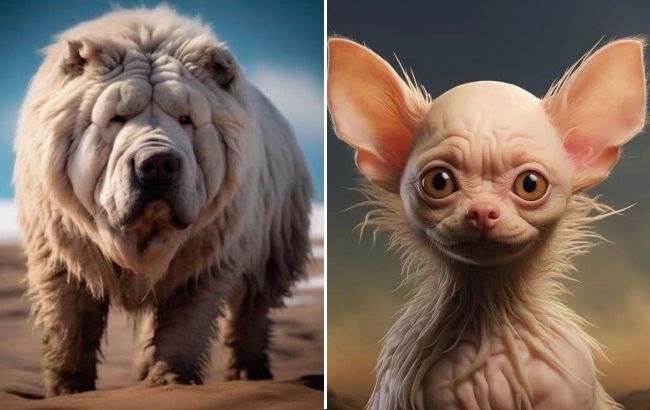Geneticists show how dogs can look in 10 thousand years
 Scientists modeled the appearance of dogs in 10 thousand years (Collage: RBC-Ukraine)
Scientists modeled the appearance of dogs in 10 thousand years (Collage: RBC-Ukraine)
Experts from an American company specializing in genetic testing for domestic animals have imagined how modern dog breeds might look like in 10,000 years, writes Interesting Engineering.
Researchers considered two scenarios: further global warming and the onset of a new ice age. By analyzing the potential impacts of these changes on the appearance of animals, they used a neural network to create illustrations reflecting their imagination.
Global warming
In the scenario of ongoing global warming, climate changes would affect the diet of domestic animals. In conditions of limited resources, dogs would likely have a smaller size, consume less food, expend less energy, and adapt to faster cooling.
Due to the rising temperature, many of them might lose a significant portion of their fur and shift their activity to nocturnal mode to avoid daytime heat.

Golden Retriever, Poodle, Greyhound, and Pomeranian in the scenario of global warming (photo: Basepaws)
Dog skin might darken to protect against ultraviolet rays, and heads with ears could increase in size for more efficient cooling as temperatures rise. In conditions of water scarcity, the metabolism of dogs might adjust to survive longer without water.
Ice Age
In the case of a new ice age, dogs would likely adapt their fur, developing denser undercoats and increasing the overall length of fur.
Scientists have not yet determined changes in the size of dogs; evolution might move towards both an increase and decrease in size. In any case, they would develop more powerful muscles and a thick layer of fat to conserve energy necessary for extended hunting and work in harness, similar to wolves.

Dalmatian, Dachshund, English Mastiff, and Bulldog in the scenario of an ice age (photo: Basepaws)
This scenario poses a serious challenge to the relationship between humans and dogs, as under extreme climate changes, species could compete for access to food and shelter.

